In 2013 we carried out a small study with 38 Garden Organic members, to explore the potential of a public survey to generate novel data on bumblebee foraging in gardens and allotments. The results of this study are now available from the latest edition of the journal, Urban Ecosystems, in our paper ‘An assessment of bumblebee (Bombus spp) land use and floral preference in UK gardens and allotments cultivated for food’.
During this study, a total of 164 plant species were visited by bumblebees. Some plants proved more popular than others, with half of all bumblebee visits being made to just 37 of these plant species.
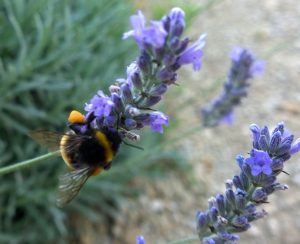
Buff-tailed Bumblebee visiting lavender
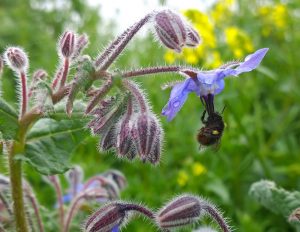
Early Bumblebee foraging on borage
Several flowering plants were visited by the seven common bumblebee species studied, including Meadow Cranesbill (Geranium pratense), Borage (Borago officinalis) and Lavender (Lavandula angustifolia). These plants are therefore useful for supporting the UK’s common bumblebee species.
Flower preferences varied between bumblebee species because of differences in tongue length. Meadow Cranesbill (Geranium pratense) was the most visited flower overall, and was especially popular with Early Bumblebees (Bombus pratorum), Red-tailed Bumblebees (B. lapidarius) and Common Carder Bees (B. pascuorum), which are short, medium and long-tongued species respectively. Many Geranium species are known to be popular with bees because their open flowers enable a range of insects to access their nectar and pollen resources.
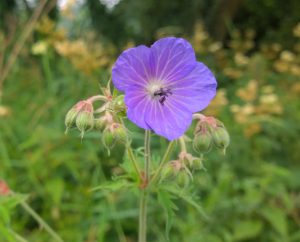
Meadow Cranesbill (Geranium pratense), native to the British Isles
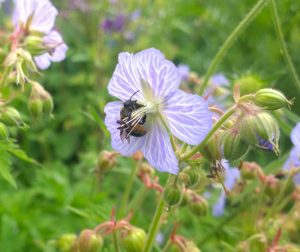
‘Mrs Kendall Clark’, a garden cultivar of Meadow Cranesbill
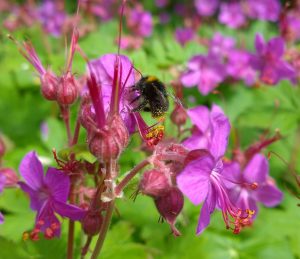
The open flowers of many Geranium species offer accessible food to a wide range of insects
The Blooms for Bees project will enable us to build on this work and generate a larger, more comprehensive data set, which will include all UK bumblebee species, as well as a greater range of survey plants (including cultivar details where applicable). Find out how to survey plants by watching our short video.
If you’d like to read the full paper, you can request a copy through ResearchGate.

